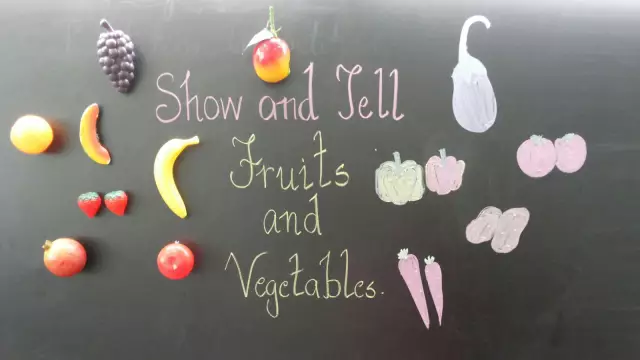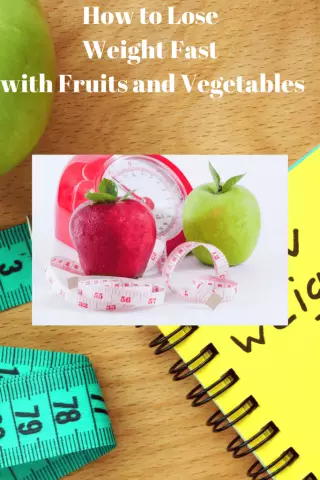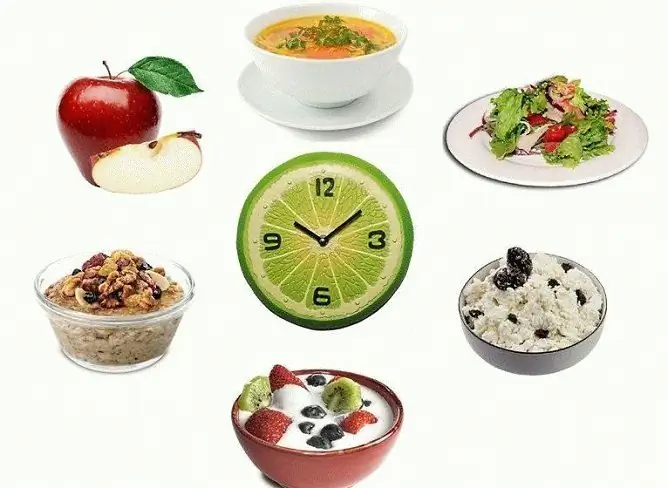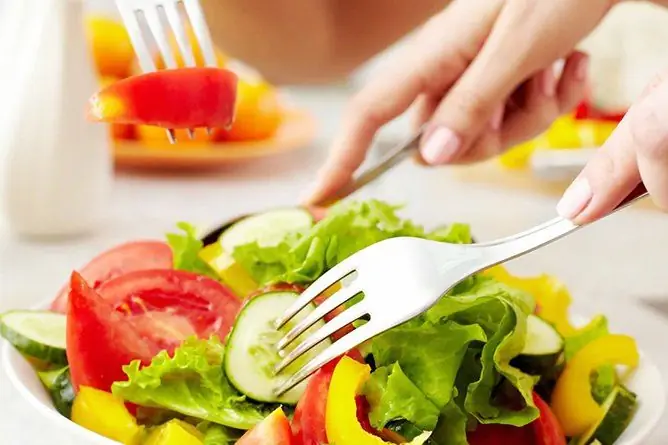- Author Rachel Wainwright [email protected].
- Public 2023-12-15 07:39.
- Last modified 2025-11-02 20:14.
What can the color of vegetables and fruits tell you?
The color of plants is due to the presence of certain chemical compounds in them. Let's talk about what the colors of vegetables and fruits mean, what is the relationship between the properties of the latter and their color.
Red
Vegetables and fruits are red due to the enzyme lycopene; it is he who is responsible for the color of tomato, grapefruit and watermelon pulp. The redder the plant, the more lycopene it contains. Lycopene is an antioxidant, the most powerful of all that are present in the human body. Antioxidants are substances that prevent the aging of cells and the accumulation of errors in them, which can subsequently lead to various diseases.
Eating red vegetables and fruits helps slow down the formation of atherosclerosis, improves cardiovascular activity, prevents the development of cataracts and other eye diseases, helps fight inflammation, and reduces the risk of tumors.
It is interesting that lycopene is not destroyed during heat treatment, and when cooking dishes from red fruits, the concentration of the enzyme increases due to the evaporation of the plant. For example, tomato paste contains 30 times more lycopene than fresh tomatoes.

Source: depositphotos.com
Orange and yellow
Beta-carotene, a pigment belonging to the same group of carotenoids as red lycopene, and also an antioxidant, is responsible for the yellow-orange color. Beta-carotene performs another important function: it is a vitamin precursor, or provitamin, that is, a substance from which vitamin A (retinol) is synthesized in the body. Retinol is vital for the normal functioning of the body. Beta carotene also has the ability to strengthen the immune system. Carrots, pumpkin, melons, apricots are rich in beta-carotene.
Another yellow pigment is lutein. There is a lot of it in peaches and citrus fruits (the color of the egg yolk is due to it). Lutein is essential for the prevention of eye diseases.

Source: depositphotos.com
Green
Vegetables and fruits are colored green due to the presence of a complex of pigments in them - the already mentioned lutein, lycopene and beta-carotene - but in addition to these compounds, green plants contain folic acid, or vitamin B9. Folic acid is important for the normal bearing of the fetus: its lack leads to the malformation of the baby's nervous, circulatory and immune systems, and the mother increases the risk of termination of pregnancy. Insufficient intake of vitamin B9 in men impairs sperm quality.
Folic acid is found in large quantities in green apples and leafy greens (spinach, etc.).

Source: depositphotos.com
Blue and purple
Anthocyanins - substances related to glycosides - are responsible for the blue color in vegetables and fruits. In general, anthocyanins are multi-colored, and the color of the plant depends on the acidity level of the environment in which they are located. In an acidic environment, anthocyanins give a red color (some varieties of red apples), in an alkaline environment - yellow-green, and in a neutral - blue-violet. An intermediate option can be all shades of pink (for example, radish peel).
Anthocyanins have antitumor activity, slow down aging, prevent heart and vascular diseases, including stroke and heart attack. Their use has a positive effect on brain activity and immunity.
Anthocyanins are so healthy that scientists have developed new varieties of "common" vegetables, colored in an unusual blue-violet color, such as purple cauliflower and purple potatoes. The anthocyanin content is high in blueberries, black currants, eggplants, dark grapes, and red cabbage (which is actually purple in color). Lots of anthocyanins in red wine; it owes its medicinal properties to these compounds.

Source: depositphotos.com
White
The white color of plants means that they have little or no coloring pigments, but this does not mean that white vegetables and fruits are useless. They contain a lot of other important compounds for the body (for example, radish, onion and garlic contain allicin, which is responsible for the burning taste and has antifungal properties and antibacterial activity).
Studies have been carried out that have proven that regular consumption of white vegetables (radishes, potatoes, cauliflower, onions, garlic, mushrooms) reduces the risk of stroke by half.

Source: depositphotos.com
It is most correct from the point of view of dietetics to eat vegetables and fruits of different colors: in this way, the maximum saturation of the diet with useful substances is achieved.
YouTube video related to the article:

Maria Kulkes Medical journalist About the author
Education: First Moscow State Medical University named after I. M. Sechenov, specialty "General Medicine".
Found a mistake in the text? Select it and press Ctrl + Enter.






